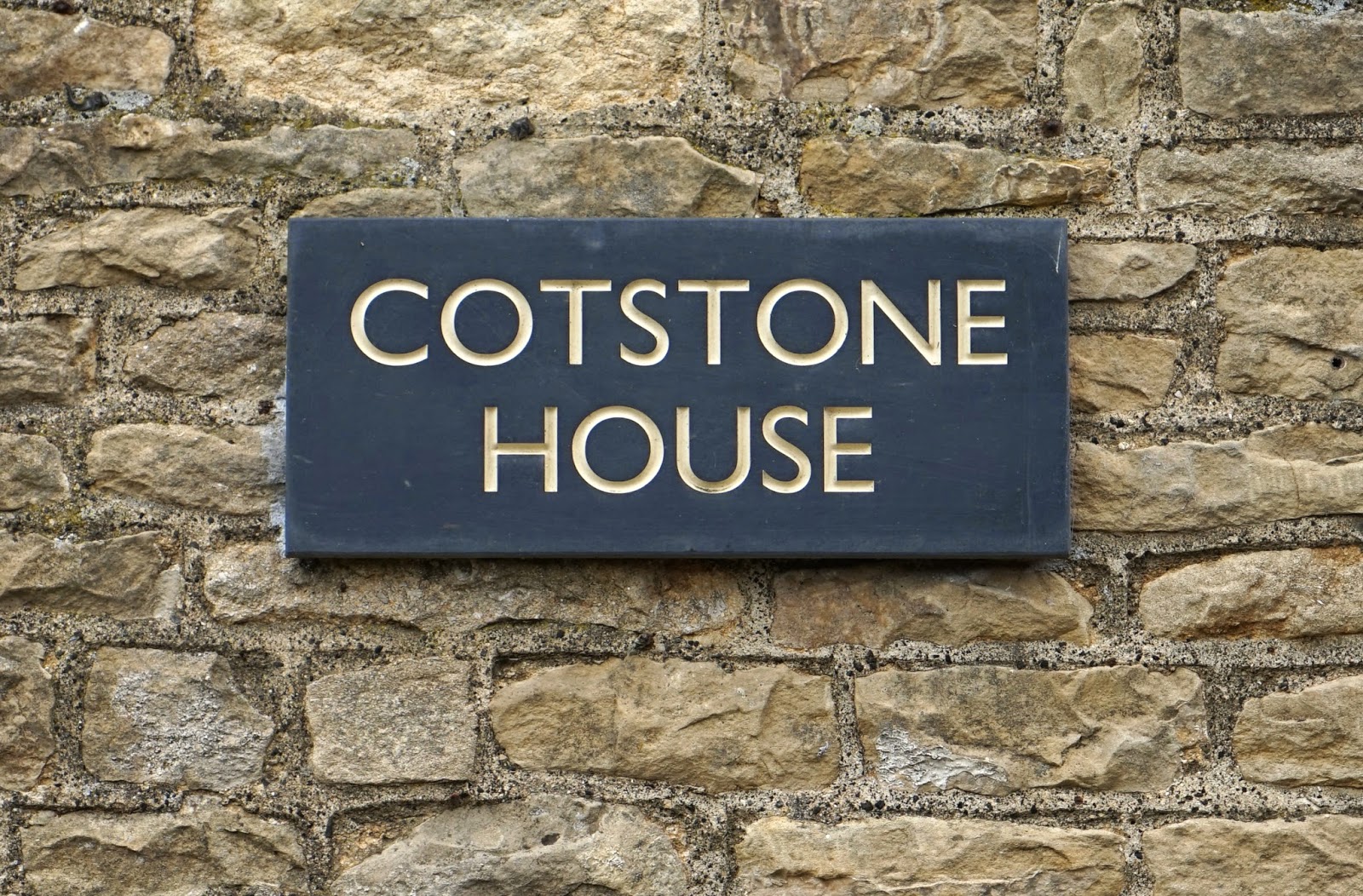Perhaps 15-20 minutes from Stow-on-the-Wold is the village of Chipping Campden. "Chipping" is an old English word that means market place. The locals refer to it as "Chippy." We recently spent a day in this village on the northern edge of the Cotswolds.
We arrived just as the stores were opening and wandered down High Street, stopping to spend time in a very old bookstore. After milling around for awhile and visiting with another tourist, we had lunch in a charming old tea room. Afterwards, we browsed a few more shops and then ended up at the Silk Mill Cottage where we were able to observe a silversmith and stone cutter at their craft.
We also hit the mother lode of used china and glassware in an antique shop with an entire basement full of goodies! We crept down a winding staircase into 4 or 5 smallish rooms, none in which Ronnie could stand up straight without knocking his head. I could have browsed for a week, but for some reason Ronnie wasn't as comfortable or enthusiastic as I was. It's just as well, as there is absolutely no more room in my luggage and all the spider webs were creeping me out as well.
We never made it past High Street so hopefully we can get back over and see the rest of the village before we leave England. "Chippy" is close by and interesting - the perfect day trip!
If interested in knowing more about Chipping Campden, click here.
 |
| Chippy proudly flies the flag |
 |
| houses along High Street |
 |
| Market Hall, erected 1627 |
 |
| produce market still held here each Saturday |
 |
| one of several tea rooms along High Street |
I like to use Trip Advisor when we're in an unfamiliar place and I need a restaurant (or other) recommendation. Tourists rated Bantam's Tea Room highest so we went with it and it did not disappoint. I had an egg salad sandwich with cream tea (yes, that included a scone with clotted cream and jam) and Ronnie branched out and had cottage pie. The difference in cottage pie and shepherd's pie is that the first is made with beef and the second is made with lamb.
 |
| I'll have a lump! |

After lunch, we walked down to Silk Mill Cottage where a few local craftsmen practice their trade. The only ones working while we were there were a stone cutter and a silversmith. There was a small coffee shop so we took a break before heading back to Stow.
 |
| stone cutter Ian Ashurst working on a commissioned piece |
 |
| silversmith's tools |
 |
| just a few tools of the trade |
 |
| David Hart, third generation silversmith |
We had a nice visit with this gentleman. He works at the same bench his grandfather worked at when he started the business in 1902. After his grandfather died, his father moved to that bench, and now it is where he works, while a son and nephew sit opposite him to design their wares. There's a ton of history in this shop and I took a lot of photos there. For more information on his work, click here.
 |
| all public school boys wear coats and ties |
Now I could have spent some serious time in this antique shop. Notice where Ronnie's head is in relation to the wooden ceiling beam. The basement consists of several rooms which you will see below. The upper rooms are neatly organized with silver and more expensive pieces residing behind glass. Owners instruct customers to leave bags and large purses behind the counter before heading down the winding staircase. As soon as we started down the tight spiral with glassware on both sides, I quickly understood the reason for their request. How easy it would be to inadvertently knock something off a shelf with a bag on your shoulder!
I'll confess up front that I'm posting too many photos of this shop, but it's hard to get the full effect with just one or two! If you're into collectibles or dishware, you'll be drooling by the time you're done looking at these. :)
 |
| MIND YOUR HEAD! |
















































